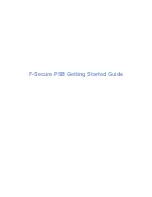
Introduction to TMF
HP NonStop TMF Management Programming Manual—540140-008
1-7
FUP
FUP
The
File Utility Program (FUP)
also provides an interactive management interface. It
performs operations on files stored on disk drives and tape volumes. With FUP, for
example, you can create, purge, duplicate, and display files, alter file characteristics,
and load data into files.
Through FUP commands, you can request several TMF operations. In particular, you
can designate files to be audited by TMF or you can change such a designation. The
FUP commands for Enscribe files related to these operations are listed in
Table 1-1
.
The equivalent NonStop SQLCI commands also apply.
Use the following FUP command options to indicate audited files:
AUDIT designates the file as audited by TMF.
NO AUDIT designates the file as nonaudited (default).
AUDITCOMPRESS designates audit compression for an audited file.
Audit
compression
is the writing of before-images and after-images to restore-audit files
so that only the changed portions of records are written.
NO AUDITCOMPRESS designates no audit compression for an audited file
(default).
For further information about FUP commands, see the
File Utility Program (FUP)
Reference Manual.
Table 1-1. FUP Commands for Designating Audit Files
Command
Description
ALTER
Changes attributes of an existing file.
CREATE
Creates a file.
INFO
Reports information about a file, including whether the redo or undo phases of
file recovery are pending.
RESET
Resets to the default attribute values used for CREATE.
SET
Sets attribute values for files created when the CREATE command is issued.
Summary of Contents for NonStop TMF
Page 4: ......
















































